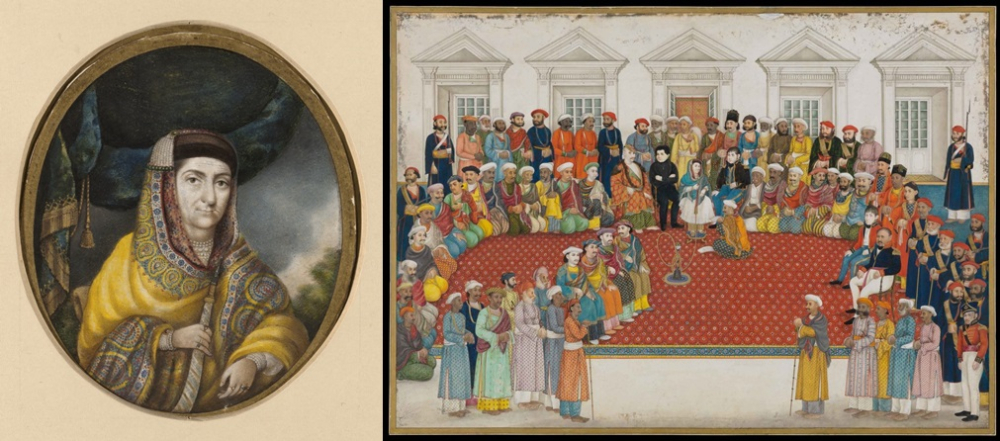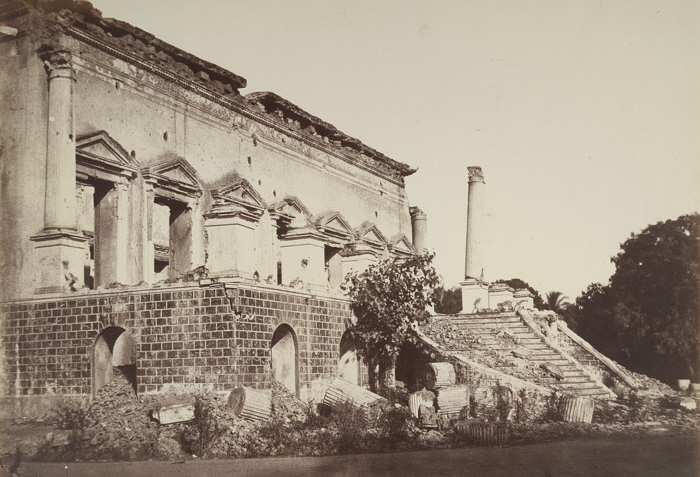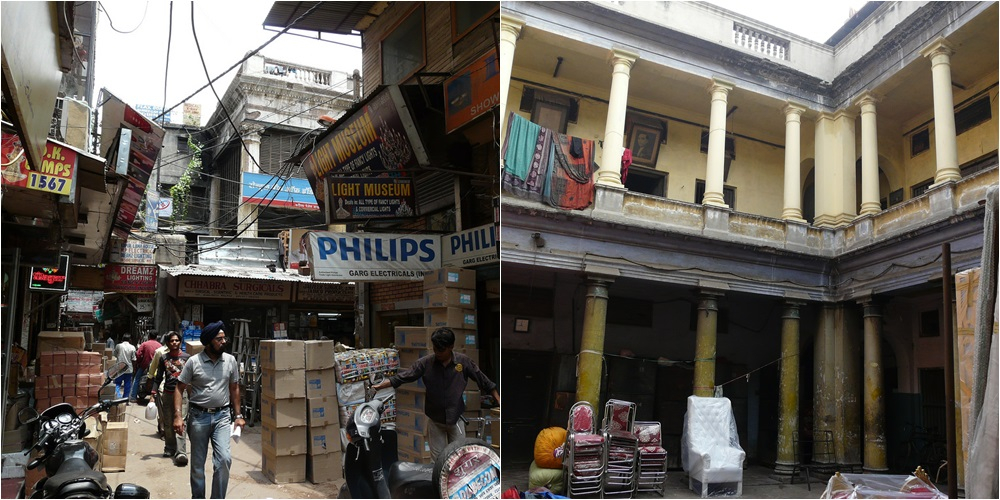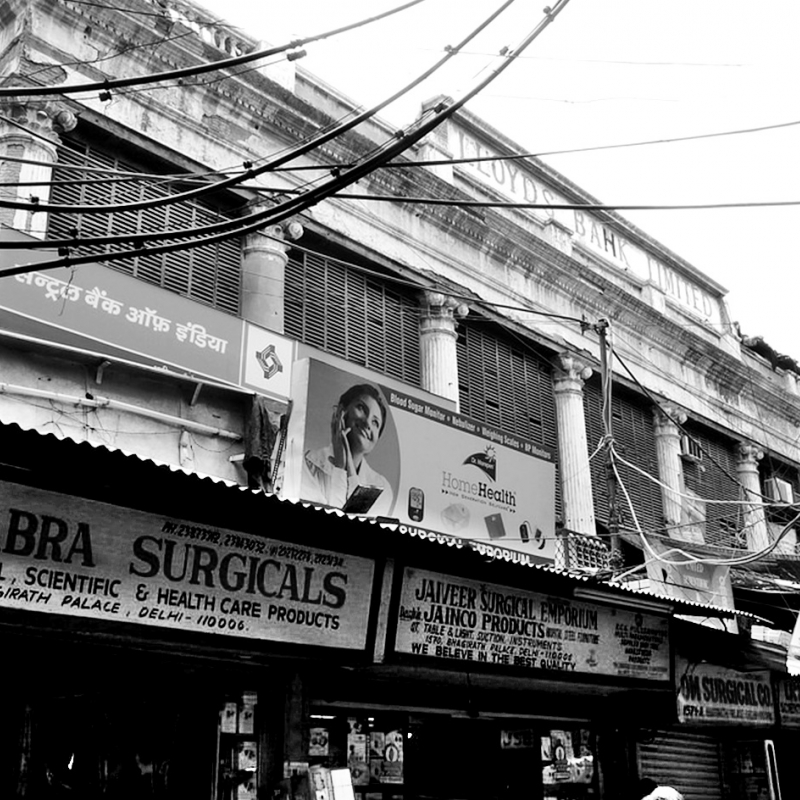The Bhagirath Palace electrical market is one of Chandni Chowk’s most famous bazaars, visited by thousands in search of lamps, lights and electrical knick-knacks. However, not many are familiar with the intriguing history of not only the 19th-century building that was once a symbol of power and sex, but of its enigmatic owner Begum Samru. We trace the story of Bhagirath Palace, also known as Begum Samru ki Haveli (Photo Source: Varun Shiv Kapur/Flickr)
Many lanes and localities in Delhi-6, or Old Delhi for many, have earned themselves the distinction of being specialised markets in their own right. And like the many thousands of stories that add to the enchantment of Chandni Chowk and its surrounding areas, these markets too have fascinating histories. Take, for instance, the dusty, tightly packed Bhagirath Palace—now one of Delhi’s key electrical and lights wholesale markets—which was once the haveli of a Kashmiri nautch girl, who led a band of mercenaries and was a close aid of Mughal emperors.
Also known as Begum Samru’s Palace, it’s hard to imagine by looking at the dilapidated façade with ‘Lloyd’s Bank Limited’ plastered across it, that just two centuries ago, this was a symbol of power and sex. The spaces between its columns that now resound with the cacophony of bargains and traffic noise, were once privy to conspiracies in hushed voices and soft whispers between lovers. This transition makes for a fascinating story—one that starts back in the mid-18th century with a little girl.
From Farzana to Begum Samru
Farzana was born to ‘an impoverished Arab nobleman’ in the 1750s. She spent her early years in Shahjahanabad and soon became a popular figure in the brothels of Chawri Bazaar.[i] At 15, Farzana became the concubine of 45-year-old Austrian mercenary, Walter Reinhardt (famously known as the ‘Butcher of Patna’ as his troops had killed over 150 Englishmen there). Reinhardt had acquired the sobriquet ‘Le Sombre’ during his time with the French army in current-day Puducherry because of his dark complexion. The name was distorted and Indianised to Samru (also spelled Sumru), and soon, Farzana too came to be known as Begum Samru. After Reinhardt’s death, she converted to Catholicism and was christened ‘Joanna Nobilis Sombre’. However, she continued to be ‘Begum Samru’ to everyone around.

Begum Samru (left) would regularly host parties (as seen in the painting on the right, circa 1820) at her palace that were attended by British officials as well (Photo Source: left, V&A, and right, Chester Beatty Collection/Wikimedia Commons)
Begum Samru rose to power and became an influential after Reinhardt’s death, not only leading his mercenaries, but also inheriting the principality of Sardhana (near Meerut), which she ruled for 55 years. During her lifetime, scholar Brijraj Singh describes her as ‘an extremely wealthy woman; extremely charitable, she was also at times extremely cruel; determined to defend her independence’.[ii]
Zeb un-Nissa
By the early 1800s, she had become a prominent political figure. Begum Samru was sharp, charming, fierce and was held in great esteem by the then ruler Shah Alam II, whom she even helped politically. For this, she was awarded the titles Zeb un-Nissa (Jewel of her Sex) and Farzand-i-Aziza (most beloved daughter).[iii] In 1806, Akbar Shah II, the penultimate Mughal ruler of India, gifted her a plot of land across the Red Fort where she built her palace. The extravagant mansion stood tall with classical Greek columns and a magnificent garden along the cypress-lined road from Chandni Chowk. As it was right next to the Red Fort, the mansion was seen as a symbol of power, where Begum Samru would regularly host parties that were attended by British officials.

After Begum Samru's death, the palace was taken over by the Delhi Bank in 1847. However, it was badly damaged during the mutiny of 1857 (Photo Source: British Library/Wikimedia Commons)

Begum Samru's palace, as it now stands—as Bhagirath Palace (Photo Source: Varun Shiv Kapur/Flickr)
But the glory of the mansion soon came to an end with Begum Samru’s death in 1837. The property was then inherited by her adopted son, David Ochterlony Dyce Sombre (named after Sir David Ochterlony, the first Resident of Delhi). Soon, Dyce left for England selling the palace to the newly formed ‘Delhi Bank’ in 1847, as it also served as the residence of the bank’s English manager Mr Beresford (whose first name is not known). During the mutiny of 1857, the bank was damaged in a fight between Indian soldiers and the British, and Mr Beresford and his family were killed.
From Bank to Bhagirath
After the mutiny, the bank was occupied by the British government and was leased out to others such as the Imperial Bank and Lloyd’s Bank Ltd. In 1922, it was purchased by Mushi Shiv Narain, who eventually sold it to Lala Bhagirath Mal in 1940, who named it Bhagirath Palace. However, Bhagirath Mal chose not to live in the building, and occupied the 25-room outhouse in the gardens known as Bagh Begum Samru, renting out the palace for marriages and parties. In Mansions at Dusk: The Havelis of Old Delhi, Bhagirath Mal’s son Amarnath Gupta recalls that during those days there was an ‘abundance of fruit trees in the vast compound’ and that ‘there were no buildings between the haveli and the Red Fort’.[iv]
Also read | Women Patrons of Shahjahanabad
The transition from a barat ghar to an electrical market is said to have started in 1950; with the addition of a trade in medicines and surgical equipment in around 1985, according an article in The Pioneer. While it's not quite known why the Llyod's Bank name continues to adorn the building, the fact that these two markets (electrical and surgical equipment)—each with a daily transaction of around Rs 1 crore—are the largest wholesale markets of their kind in India and Asia, respectively, is well known. To keep the banking tradition alive, there is a small State Bank of India branch housed within its premises as well.
Today, the building is only a shadow of what it used to be. The symbol of Begum Samru’s power lies neglected, obscured by the display boards, posters, in darkness behind the bright lights emanating from the shops, visible only to those who are acquainted with its past.
This article is part of the What's In The Name series on Saha Sutra. A version of this article was also published on The Statesman.
Notes
[i] Brijraj Singh, ‘The Enigma of Begum Samru: Differing approaches to her Life’, India International Centre Quarterly, vol. 24, no. 4 (Winter 1997): 33–43.
[ii] Ibid.
[iii] J.P. Losty, ‘Raja Jivan Ram: A Professional Indian Portrait Painter of the Early Nineteenth Century’, 2015, https://www.bl.uk/eblj/2015articles/pdf/ebljarticle32015.pdf
[iv] Pavan K. Varma and Sondeep Shankar, Mansions at Dusk: The Havelis of Old Delhi (New Delhi: Manohar Publishers and Distributors, 2003), 68.












